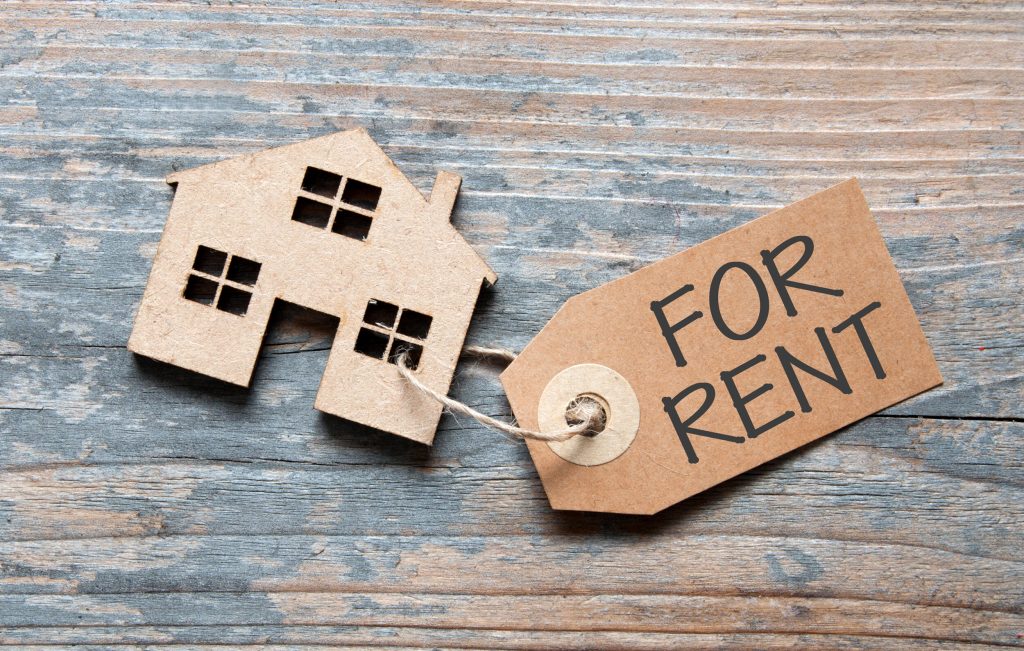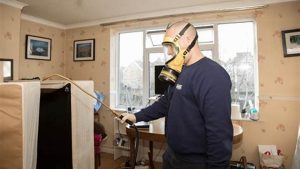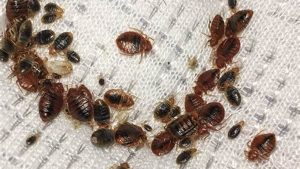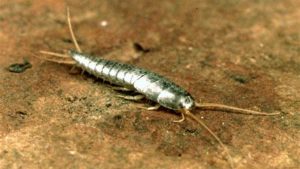Whose Responsibility is Pest Control in a Rental Property?
The question of “whose responsibility is pest control in a rental property” is a vital one for both tenants and landlords. The answer depends on the specific terms of the lease agreement, as well as applicable local laws. In general, however, landlords are responsible for maintaining the habitability of the property, which includes controlling pests.
Tenants are responsible for keeping the property clean and free of clutter, which can attract pests. Landlords are typically responsible for repairing any structural defects that may allow pests to enter the property, such as holes in walls or gaps around windows and doors.
Tenants have the right to a pest-free living space, and landlords have the responsibility to provide it. By working together, tenants and landlords can help to keep pests out of rental properties.
In this article, we will discuss the legal framework surrounding pest control in rental properties, as well as provide practical advice for tenants and landlords on how to prevent and control pests.
Whose Responsibility is Pest Control in a Rental Property?

Determining whose responsibility is pest control in a rental property is crucial for maintaining a healthy and safe living environment. Several key aspects come into play, including:
- Lease agreement
- Local laws
- Landlord’s duty to maintain habitability
- Tenant’s responsibility for cleanliness
- Structural defects
- Tenant’s right to a pest-free living space
- Landlord’s responsibility to provide a pest-free living space
- Cooperation between tenants and landlords
Understanding these aspects helps ensure that both tenants and landlords fulfill their respective obligations. By working together, they can effectively prevent and control pests, creating a mutually beneficial living arrangement. For instance, tenants should promptly report any pest infestations to the landlord, while landlords should address the issue promptly and thoroughly.
Lease Agreement
Within the context of determining “whose responsibility is pest control in a rental property,” the lease agreement plays a pivotal role. It outlines the specific obligations of both tenants and landlords regarding pest control, ensuring a clear understanding of their respective duties.
- Pest Control Clause: Many lease agreements include a specific clause addressing pest control, explicitly stating which party is responsible for preventing and eliminating infestations. This clause may vary depending on local laws and the specific terms negotiated between the landlord and tenant.
- Maintenance and Repair Responsibilities: The lease agreement typically outlines the landlord’s responsibility for maintaining the property in a habitable condition, which includes controlling pests. This may involve repairing structural defects that allow pests to enter, such as holes in walls or gaps around windows and doors.
- Tenant Obligations: While the landlord is generally responsible for pest control, tenants also have certain obligations. They are expected to keep the property clean and free of clutter, which can attract pests. Additionally, tenants should promptly report any pest infestations to the landlord.
- Shared Responsibility: In some cases, the lease agreement may establish shared responsibility for pest control. For instance, the tenant may be responsible for minor pest issues, such as ants or flies, while the landlord is responsible for more significant infestations, such as rodents or termites.
By carefully reviewing the lease agreement and understanding the respective responsibilities of each party, tenants and landlords can work together to prevent and control pests, ensuring a healthy and comfortable living environment.
Local laws
When determining “whose responsibility is pest control in a rental property,” local laws play a crucial role in shaping the legal framework and defining the obligations of both landlords and tenants. These laws vary across jurisdictions, but they generally address various aspects related to pest control, including:
- Minimum habitability standards: Local laws often establish minimum habitability standards for rental properties, which may include specific requirements for pest control. These standards ensure that rental properties are safe and habitable, free from pests that could pose health or safety risks.
- Landlord’s duty to maintain habitable premises: In many jurisdictions, local laws impose a duty on landlords to maintain their rental properties in a habitable condition, which includes controlling pests. This duty may extend to repairing structural defects that allow pests to enter, such as holes in walls or gaps around windows and doors.
- Tenant’s responsibility for cleanliness: While landlords are generally responsible for pest control, tenants also have a responsibility to keep their rental units clean and free of clutter, which can attract pests. Local laws may specify the tenant’s obligations in this regard, such as keeping food properly stored and disposing of garbage regularly.
- Pest control methods: Some local laws may regulate the methods used for pest control in rental properties. For instance, certain pesticides or traps may be prohibited due to safety concerns or environmental impact. Landlords and tenants should be aware of these regulations to ensure that pest control measures comply with local laws.
Understanding and complying with local laws is essential for both landlords and tenants to fulfill their respective obligations regarding pest control in rental properties. These laws help ensure that rental properties are safe and habitable, while also protecting the rights and responsibilities of both parties.
Landlord’s duty to maintain habitability
Within the context of “whose responsibility is pest control in a rental property,” “landlord’s duty to maintain habitability” is a crucial aspect that shapes the legal framework and defines the obligations of landlords. This duty encompasses various facets that directly impact the landlord’s responsibility for pest control:
- Structural integrity: Landlords are responsible for maintaining the structural integrity of the rental property, including repairing any defects that may allow pests to enter, such as holes in walls or gaps around windows and doors.
- Sanitation and cleanliness: Landlords are also responsible for ensuring that the property is clean and sanitary, which includes removing garbage and debris that may attract pests.
- Pest control measures: In many jurisdictions, landlords are required to take reasonable steps to prevent and control pests, such as providing regular pest control treatments or hiring a professional pest control company.
- Tenant cooperation: While landlords are primarily responsible for pest control, tenants also have a responsibility to cooperate with pest control efforts, such as keeping their units clean and reporting any pest infestations promptly.
By fulfilling their duty to maintain habitability, landlords can help to create a pest-free living environment for their tenants. This not only protects the health and safety of tenants but also helps to prevent costly repairs and legal disputes.
Tenant’s responsibility for cleanliness
Within the framework of “whose responsibility is pest control in a rental property,” “Tenant’s responsibility for cleanliness” plays a significant role in preventing and controlling pest infestations. Tenants have a duty to maintain a clean and sanitary living environment, which helps to reduce the likelihood of attracting and harboring pests.
- Waste disposal: Tenants are responsible for properly disposing of garbage and food waste, as these can attract pests such as cockroaches, flies, and rodents. Regular cleaning and proper waste disposal help to keep the property clean and free of potential pest attractants.
- Kitchen hygiene: Maintaining a clean kitchen, including regular cleaning of surfaces, appliances, and utensils, is crucial in preventing pest infestations. Food spills, crumbs, and dirty dishes can attract ants, cockroaches, and other pests.
- Clutter control: Avoiding clutter and excess storage of items, especially in areas like pantries and closets, helps to reduce hiding places for pests. Cluttered spaces can provide shelter and nesting areas for pests, making it harder to control infestations.
- Pet care: Tenants with pets are responsible for keeping their pets clean and well-groomed, as well as properly disposing of pet waste. Unattended pet food and dirty litter boxes can attract pests and contribute to infestations.
By fulfilling their responsibility for cleanliness, tenants can significantly reduce the risk of pest infestations and contribute to a healthier and more comfortable living environment. Maintaining a clean property not only benefits the tenants themselves but also supports the landlord’s efforts to control pests and maintain the habitability of the rental property.
Structural defects
In the context of “whose responsibility is pest control in a rental property,” “Structural defects” play a critical role in determining the extent of the landlord’s obligation to control pests. Structural defects refer to physical flaws or imperfections in the property’s structure that may provide entry points or breeding grounds for pests.
- Holes and gaps: Holes in walls, gaps around windows and doors, and cracks in foundations can provide entry points for pests such as rodents and insects. Landlords are generally responsible for repairing these defects to prevent pests from entering the property.
- Moisture issues: Leaking pipes, faulty drainage systems, and poor ventilation can create moisture problems that attract pests like cockroaches and mold. Landlords are responsible for addressing these issues to eliminate moisture sources and prevent pest infestations.
- Debris and clutter: Accumulated debris, such as fallen leaves, overgrown vegetation, and piles of garbage around the property can provide hiding places and food sources for pests. Landlords are responsible for removing debris and maintaining a clean environment around the property to reduce pest attractants.
- Lack of pest-proofing measures: Some properties may lack pest-proofing measures, such as screens on windows and doors, weatherstripping around openings, and tight-fitting lids on trash cans. Landlords are encouraged to install these measures to prevent pests from entering the property.
By addressing structural defects and implementing preventive measures, landlords can significantly reduce the likelihood of pest infestations and fulfill their duty to maintain habitable and pest-free living conditions for their tenants.
Tenant’s right to a pest-free living space
Within the context of “whose responsibility is pest control in a rental property,” understanding the “Tenant’s right to a pest-free living space” is crucial. This right encompasses several key aspects that shape the landlord’s obligations and the tenant’s expectations regarding pest control.
- Health and safety: Tenants have the right to live in a pest-free environment as pests can pose health and safety risks. Pests can carry diseases, contaminate food, and cause allergic reactions or respiratory issues. Landlords are responsible for addressing pest infestations to protect the health and well-being of their tenants.
- Quiet enjoyment: Tenants have the right to peacefully enjoy their rental property without excessive disturbance from pests. Pests can disrupt sleep, create noise, and cause emotional distress. Landlords must take reasonable steps to control pests to ensure tenants can fully enjoy their living space.
- Property condition: Tenants have the right to expect that their rental property is maintained in a habitable condition, which includes being free from pests. Persistent pest infestations can damage the property and reduce its value. Landlords are obligated to address pest issues to preserve the property’s condition and maintain its habitability.
- Legal implications: In some jurisdictions, tenants may have legal recourse if their landlord fails to control pests effectively. Tenants may be able to withhold rent, file a complaint with local authorities, or even terminate their lease in cases of severe infestations that pose a significant health or safety hazard.
Understanding and enforcing the “Tenant’s right to a pest-free living space” helps ensure that tenants can live in safe, healthy, and enjoyable rental properties. By fulfilling their obligations to control pests, landlords can not only meet their legal responsibilities but also maintain positive landlord-tenant relationships and protect the value of their properties.
Landlord’s Responsibility to Provide a Pest-Free Living Space
Within the framework of “whose responsibility is pest control in a rental property,” understanding the landlord’s responsibility to provide a pest-free living space is crucial. This responsibility stems from the landlord’s duty to maintain the habitability of the property, which includes controlling pests that may pose health or safety risks to tenants.
The landlord’s responsibility to provide a pest-free living space is directly linked to the issue of “whose responsibility is pest control in a rental property.” By fulfilling this responsibility, landlords can effectively prevent and control pests, ensuring a safe and healthy living environment for their tenants. Conversely, neglecting this responsibility can lead to pest infestations, potentially putting tenants at risk and menimbulkan legal consequences for the landlord.
Real-life examples of a landlord’s responsibility to provide a pest-free living space include addressing structural defects that allow pests to enter the property, such as holes in walls or gaps around windows and doors. Additionally, landlords are responsible for taking reasonable steps to control existing pest infestations, such as hiring a professional pest control company or providing regular pest control treatments.
Understanding this connection has practical implications for both landlords and tenants. Landlords who recognize their responsibility to provide a pest-free living space can take proactive measures to prevent and control pests, avoiding potential legal issues and maintaining positive landlord-tenant relationships. Tenants, on the other hand, can hold their landlords accountable for fulfilling this responsibility, ensuring that they live in a safe and pest-free environment.
Cooperation between tenants and landlords
In the context of “whose responsibility is pest control in a rental property,” “Cooperation between tenants and landlords” plays a pivotal role. A collaborative approach can significantly enhance pest control efforts and ensure a pest-free living environment.
Tenants can assist by promptly reporting any pest infestations to the landlord, enabling timely action to prevent the problem from escalating. Additionally, tenants should maintain a clean and clutter-free living space, as clutter can attract pests. By adhering to these responsibilities, tenants contribute to a pest-free environment and support the landlord’s pest control efforts.
Landlords, in turn, should respond promptly to pest reports and implement effective pest control measures. They should also conduct regular inspections to identify potential pest entry points and address them promptly. By fulfilling their responsibilities and working in cooperation with tenants, landlords can create and maintain a pest-free living space.
Real-life examples of successful cooperation include tenants informing landlords about a minor ant infestation, leading to timely treatment and prevention of a larger infestation. Conversely, a lack of cooperation, such as tenants neglecting to report pest issues or landlords delaying pest control measures, can result in severe infestations and potential health hazards.
Understanding the connection between “Cooperation between tenants and landlords” and “whose responsibility is pest control in a rental property” allows both parties to fulfill their respective obligations and maintain a mutually beneficial living arrangement. By working together, tenants and landlords can effectively prevent and control pests, ensuring a safe and healthy living environment.
Frequently Asked Questions (FAQs)
This FAQ section aims to address common questions and clarify responsibilities regarding pest control in rental properties, providing tenants and landlords with essential information.
Question 1: Who is generally responsible for pest control in a rental property?
Landlords are typically responsible for maintaining the habitability of the property, which includes controlling pests. However, tenants also have certain responsibilities, such as keeping their living space clean and reporting pest infestations promptly.
Question 2: What are some examples of landlord responsibilities for pest control?
Landlords are responsible for addressing structural defects that may allow pests to enter, such as holes in walls or gaps around windows and doors. They should also take reasonable steps to control existing infestations, such as hiring a professional pest control company or providing regular pest control treatments.
Question 3: What are some examples of tenant responsibilities for pest control?
Tenants should maintain a clean and clutter-free living space, as clutter can attract pests. They should also promptly report any pest infestations to the landlord and avoid actions that may contribute to pest problems, such as leaving food or garbage unattended.
Question 4: What should tenants do if they discover a pest infestation?
Tenants should promptly notify the landlord of any pest infestations, providing as much detail as possible about the type and extent of the infestation. They should also take steps to prevent the infestation from spreading, such as sealing any potential entry points for pests.
Question 5: What if the landlord is not responsive or does not take action to control pests?
If the landlord fails to address a pest infestation in a timely and effective manner, tenants may have legal recourse, depending on the specific laws and regulations in their jurisdiction. They may be able to withhold rent, file a complaint with local authorities, or even terminate their lease in cases of severe infestations that pose a significant health or safety hazard.
Question 6: Can tenants be held responsible for pest infestations caused by their own actions or negligence?
Yes, tenants may be held responsible for pest infestations that are directly caused by their own actions or negligence. For example, if a tenant fails to maintain a clean living space or improperly disposes of garbage, they may be liable for the costs of pest control.
These FAQs provide a general overview of pest control responsibilities in rental properties. However, it’s important to refer to the specific terms of the lease agreement and applicable local laws for a more comprehensive understanding of the rights and obligations of both landlords and tenants.
Moving forward, the next section of this article will delve into the legal framework surrounding pest control in rental properties, exploring the relevant laws and regulations that govern landlord and tenant responsibilities.
Tips for Effective Pest Control in Rental Properties
This section provides practical tips for both landlords and tenants to prevent and control pests in rental properties, ensuring a healthy and comfortable living environment.
Tip 1: Regular Inspections: Conduct regular inspections of the property to identify potential pest entry points, such as holes in walls, gaps around windows and doors, and cracks in foundations. Seal any openings to prevent pests from entering.
Tip 2: Clean and Clutter-Free Environment: Maintain a clean and clutter-free living space, as clutter can attract and harbor pests. Regularly clean surfaces, vacuum carpets, and remove garbage and debris to eliminate potential food sources and nesting areas for pests.
Tip 3: Proper Food Storage: Store food in airtight containers and keep pet food in sealed bags to prevent attracting pests. Avoid leaving food or crumbs unattended, and clean up any spills immediately.
Tip 4: Moisture Control: Eliminate sources of moisture that can attract pests, such as leaking pipes, clogged drains, and high humidity. Use dehumidifiers in damp areas and ensure proper ventilation to reduce moisture levels.
Tip 5: Outdoor Maintenance: Keep the property’s exterior clean and well-maintained. Trim overgrown vegetation, remove fallen leaves and debris, and seal any cracks or holes in the foundation to prevent pests from entering the property.
Tip 6: Tenant Cooperation: Tenants should promptly report any pest infestations to the landlord and cooperate with pest control efforts. Keep living spaces clean, avoid actions that may attract pests, and dispose of garbage properly.
Tip 7: Landlord Responsiveness: Landlords should respond promptly to tenant reports of pest infestations and take appropriate action to control and eliminate pests. They should also conduct regular inspections and address any structural defects that may allow pests to enter the property.
Tip 8: Professional Pest Control: In cases of severe or persistent infestations, consider hiring a professional pest control company. Professionals have the expertise and resources to identify the source of the infestation and implement effective control measures.
By following these tips, landlords and tenants can work together to prevent and control pests in rental properties, ensuring a healthy and comfortable living environment for all.
The next section of this article will discuss the legal implications of pest control in rental properties, providing insights into the rights and responsibilities of both landlords and tenants regarding pest infestations.
Conclusion
This comprehensive exploration of “Whose Responsibility is Pest Control in a Rental Property?” has illuminated the complex interplay between landlord and tenant obligations in maintaining a pest-free living environment. Key insights include the landlord’s primary responsibility to control pests due to their duty to maintain habitability, the tenant’s responsibility to report infestations and keep the property clean, and the importance of cooperation between both parties for effective pest management.
The article emphasizes that preventing and controlling pests requires a collaborative approach. Landlords must proactively address structural defects and implement preventive measures, while tenants must maintain a clean living space and promptly report any pest issues. By fulfilling their respective responsibilities, both parties can create a mutually beneficial environment free from pests.
Ultimately, pest control in rental properties is not just about assigning blame but about shared accountability. By understanding their roles and working together, landlords and tenants can safeguard the health, comfort, and well-being of all occupants.


